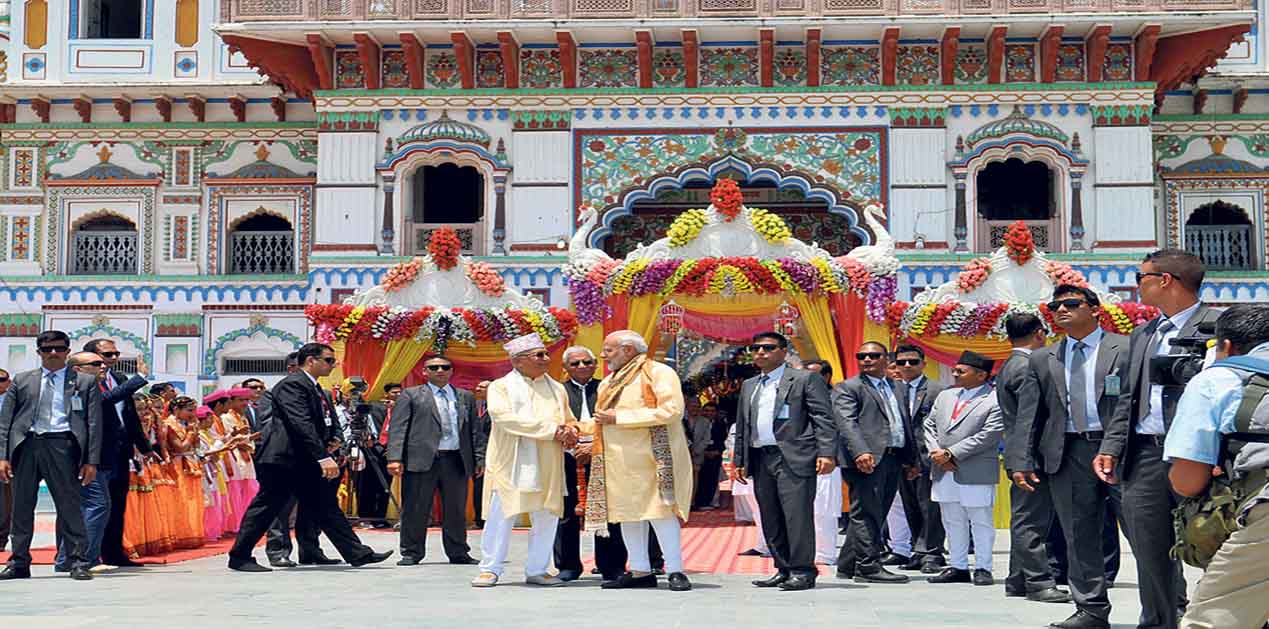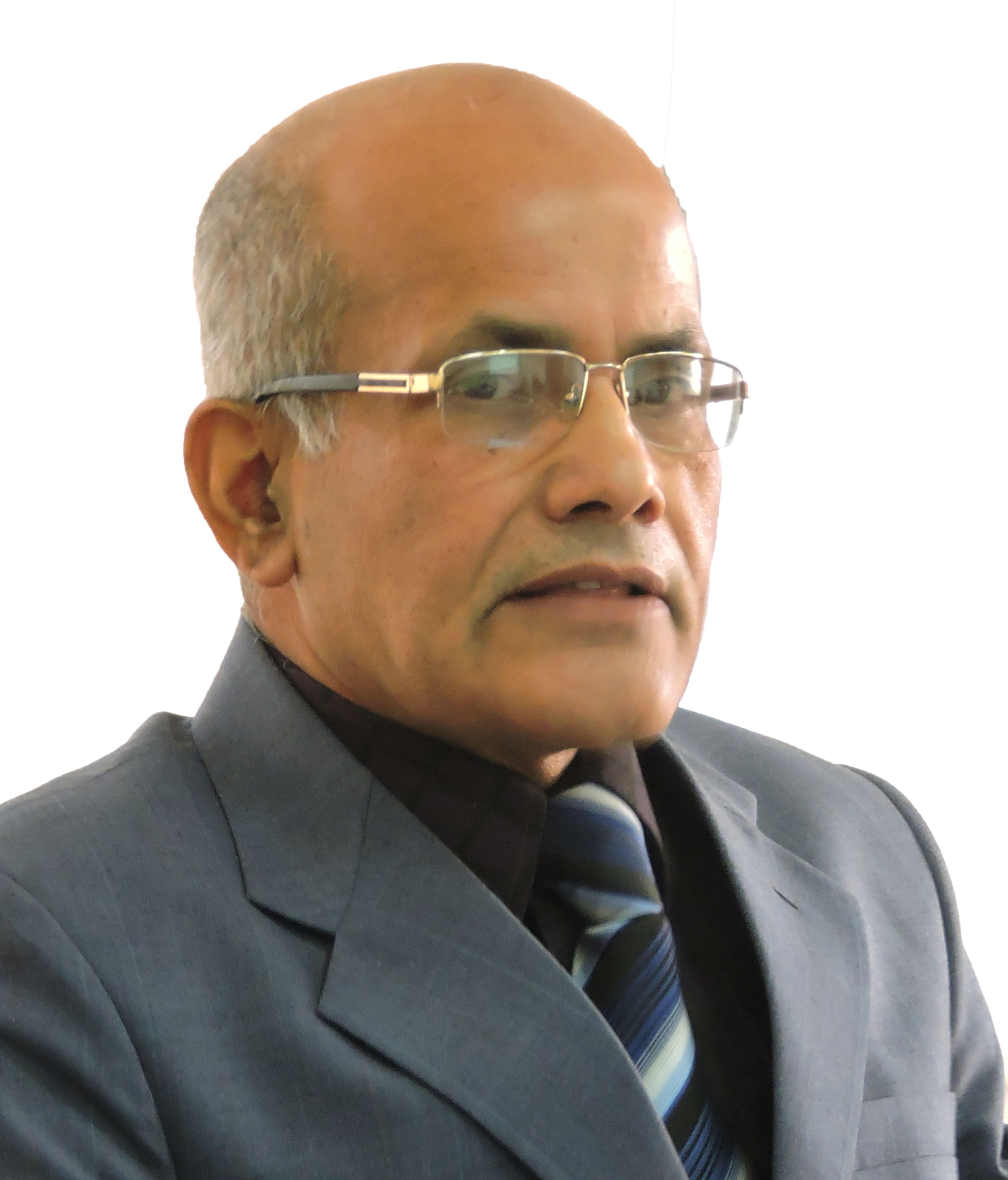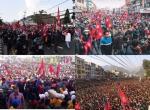During his Premiership of four years, Indian Prime Minister Narendra Modi visited Nepal four times – twice in 2014 and twice in 2018. He did not visit any other South Asian country as many times as he has visited Nepal, which amply demonstrates his interest in this Himalayan country. During these visits, he tried to develop working relations with Nepal mainly through cultural diplomacy, apart from politico-economic diplomacy.
In keeping with his ‘Neighbourhood First’ policy, Modi first visited Nepal in August 2014 just after Bhutan. His speech in Nepal’s parliament was significant, where he suggested the need to address the issues of each ethnic group in the country while making the constitution. He also emphasised the importance of southern Terai belt between the hill region of Nepal and India in promoting the historical cultural relations. He had offered puja to Pashupatinath at the temple in Kathmandu before leaving for India, and had also expressed a desire to visit the holy city of Janakpur on his next visit.
Modi came to Kathmandu shortly after to attend the 18th South Association for Regional Cooperation (SAARC) Summit in November 2014, and held meetings with various leaders of different political parties. Despite the fact that his visit to the holy places of Janakpur, Lumbini and Muktinath was not possible on grounds of security consideration, he took a major initiative in getting the twin city agreement signed between Janakpur and Ayodhya.
Unlike his first two visits, Modi's third visit was entirely different in the sense that it was solely a pilgrimage to such holy places as Janakpur, to Muktinath in Mustang, and finally to Pashupatinath in Kathmandu. Modi's pilgrimage to Janakpur was unique in several respects. In fact, he was the first head of government or state of any country who first landed in Janakpur before going to Kathmandu, Nepal’s capital city. Over 300,000 people from Janakpur and different districts of Nepal, apart from those of neighbouring regions of Bihar in India, had congregated at the civic reception organised in his honour by Janakpur Sub-metropolitan Mayor Lal Kishor Sah at Barahabigha Maidan in Janakpur.
Significantly, Modi had expressed his desire to visit Janakpur during his visit to attend the the SAARC summit. Although the people of this town had made all possible arrangements to welcome him, including taking private initiative to expand the roads and decorate the holy city, his visit to Janakpur on that trip was cancelled due to the conspiracy of certain section of political leaders. Certain elements in Nepal had feared that Modi’s growing popularity in Nepal, and particularly in the Terai region, would go against their own interest. To vent their anger, locals from Janakpur resorted to hunger strike against their own Kathmandu-based politicians for playing a mischievous role. This time around, never before in the history of Janakpur had so many people come to listen to any leader from India or any other country. Before Modi’s visit to Janakpur, Indian Prime Minister Chandrashekhar had also been to this place. But this visit did not find connect with the people of Janakpur. He had given a political speech at Barahabigha Maidan, without bothering to pay homage to Goddess Sita at the world famous Janaki Mandir. On the other hand, Modi first offered puja to Goddess Sita at the temple even before addressing the civic reception.
Modi gave a very emotional address to the mammoth gathering at Barahbigha Maidan in Janakpur on May 11. He not only spoke about the glorious contributions made by philosopher King Janak of ancient Mithila State in the spiritual and cultural life of India, but he also dwelt on the role played by Janakpur in strengthening the historical and traditional relations between Nepal and India. Modi observed the complementarities in relations between Nepal and India, citing how Indian culture was incomplete without considering the Nepalese culture in the same way as Nepalese culture was incomplete without Indian culture.
As a mark of forging the traditional links between Nepal and India, Modi inaugurated the direct bus service between Janakpur and Ayodhya. As it is well known, Janakpur is the birthplace of Goddess Sita while Ayodhya is the birthplace of Lord Ram and that they were bound together in the knot of marriage, as described in the epic Ramayan, during the Treta Yuga some ten thousand years ago. The connectivity between Janakpur and Ayodhya and consequentially ties between Nepal and India will get strengthened when the Janakpur Railway connecting this holy city of Janakpur with Jaynagar (India) becomes operational, possibly towards the end of this year. Besides this railway route, Janakpur is connected to India through Janakpur-Jatahi/Pipraun/Darbhanga Road, apart from Janakpur-Bhithamore-Sitamarhi Road. There are discussions about the possibility to introduce air connectivity between Janakpur and Ayodhya.
Remarkably, people of Janakpur could easily connect with Modi. In his comments on the visit, Minister of Physical Planning of State 2, Jitendra Sonal, rightly observed that Janakpur had become Modimaya (Modi oriented) while Modi became Janakpurmaya (Janakpur oriented). Many important places in Janakpur, including the Barahbigha Maidan, was painted in bhagwa (fire) colour to symbolise the shared spiritual traditions between Nepal and India. During the civic reception at Janakpur, another landmark development was the speech of the Chief Minister of State No. 2, Md Lalbabu Raut, who dwelt on the discriminatory policy of Nepal Government towards the Madheshi-Terai people in the country.
During his fourth visit to Nepal to attend the Bay of Bengal Initiative for Multi-Sectoral Technical and Economic Cooperation (BIMSTE) Summit meeting in Kathmandu that concluded recently on August 31, 2018, PM Modi had wanted the BIMSTEC Motor Vehicle Agreement to be concluded at the earliest so that the people-to-people connectivity among the citizens of the seven member countries, including India, Bangladesh, Nepal, Bhutan, Bangladesh, Sri Lanka, Thailand and Myanmar, be facilitated. Easing the visa processing for the BIMSTEC-member citizens was also one of the focal point in the Summit. Cultural ties among the BIMSTEC member countries in general and Nepal and India, in particular, is likely to be boosted through such activities.
None of the leaders in the recent history of Nepal and India have played such an active role in fostering cultural and traditional relations between the two countries as Modi has. Nepal-India relations is bound to reach greater heights with the kind of understanding that Modi has developed through cultural diplomacy in Nepal. This has already started bearing fruits. The two countries have now taken a major initiative to harness Nepal’s water resources and develop connectivity through railways, waterways and airways. Given the fact that India has emerged one of the leading countries of the world in science, technology and economy and Modi’s commitment for developing Nepal, the time is ripe for Nepal to benefit in all such fields.
(Author of several books, Jha is a free-lance writer in Nepal)
Image Source: https://myrepublica.nagariknetwork.com/uploads/media/Modi_Oli_Janakpur.jpg











Post new comment